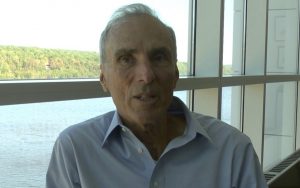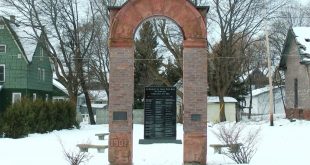Engineering can plays a vital role in improving public safety on a global level. One seismologist shared some of his experiences with students at Michigan Tech Thursday and described the differences that proper construction guidelines can make when disaster strikes.
 Born and raised In the Los Angeles area, seismologist Brian Tucker was no stranger to the earthquakes of Southern California. “I thought I knew what earthquakes were all about, and yet, after I graduated I was able to spend time in developing countries like India, Turkey, Central Asia, and it was there that I really understood for the first time what earthquakes do to the majority of the people in the world who don’t live in single story wooden frame homes but live in unreinforced masonry buildings,” Tucker said.
Born and raised In the Los Angeles area, seismologist Brian Tucker was no stranger to the earthquakes of Southern California. “I thought I knew what earthquakes were all about, and yet, after I graduated I was able to spend time in developing countries like India, Turkey, Central Asia, and it was there that I really understood for the first time what earthquakes do to the majority of the people in the world who don’t live in single story wooden frame homes but live in unreinforced masonry buildings,” Tucker said.
While visiting underprivileged nations, he noticed that natural disasters in foreign lands are not that different from those experienced on American soil, with one major exception–the death toll over seas is drastically higher.
Tucker said, “Those buildings collapse and smother or crush people.”
 During last night’s lecture to freshmen, he gave one example of a San Francisco earthquake and one in Armenia, both identical in magnitude. However the California quake claimed 62 lives while the one in Armenia killed 40, 000 people. Tucker noticed that the most obvious reason for this is the way we build our structures as opposed to buildings that are constructed in other countries.
During last night’s lecture to freshmen, he gave one example of a San Francisco earthquake and one in Armenia, both identical in magnitude. However the California quake claimed 62 lives while the one in Armenia killed 40, 000 people. Tucker noticed that the most obvious reason for this is the way we build our structures as opposed to buildings that are constructed in other countries.
“We have public policies and laws, regulations, and codes that enforce these better building practices,” Tucker said.
With 96% of all dollars spent on geographic disasters is allocated to recovery, and only 4% going toward prevention, Brian saw a need and is literally changing the world. His non profit organization visits countries that have limited resources and he teaches better building techniques that ultimately save lives.
Tucker said, “Our clients don’t pay us anything, but we do ask them to send government officials or local people to work with us.”
By building relationships with community administrators, GeoHazzards International leaves behind it’s teachings with someone who will continue to implement them in new construction projects, which makes for safer structures and less casualties if and when disaster strikes.
“In some cases, we help them retrofit schools. In some cases, we advocate building vertical evacuation structures for tsunamis,” he said.
For some countries, retrofitting school buildings is not an option due to the costs required, so Tucker has presented alternative solutions.
Tucker said, “We’re doing one thing in Bhutan which is interesting. We suggested that they may want to replace their weak school desks with locally built solid metal desks, under which the kids can take refuge.”
Those desks are commonly referred to as earthquake desks and can withstand a tremendous impact from falling debris. Tucker worked with local furniture makers, teaching them how to build the desks, and today the country’s school system doesn’t purchase any other kind.
As many of last night’s attendees will be future engineers, Tucker says he hopes to inspire students to keep an open mind as they enter their career paths.
 Keweenaw Report Your Source for Local News and Sports
Keweenaw Report Your Source for Local News and Sports





